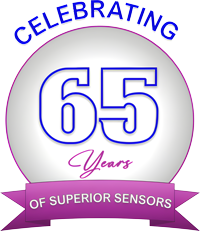Force Sensor Products
Frequently Asked Questions – Force Sensor Products
What are the temperature limits of a Strainsert force sensor?
Typical temperature range is -40° F [-40° C] to 300° F [149° C] depending on the transducer type. The maximum limits, on case by case evaluation are -65° F [-53° C] to 400° deg. F [204°C]. Designs at these maximum limits may reduce overall performance and require special materials and/or components.
What linearity and repetition can I expect from a force sensor?
Standard Force Products: Review specifications by product for the various transducers.
Custom Force Products: Non-linearity, typically ±0.5 to ±2% full scale. Non-Repeatability: typically ±0.15% to ±0.3% full scale. Hysteresis: typically ±0.5 to ±4.0% full scale (Depending on type of sensor, design requirements and loading characteristics).
Bi-Axial Load Pins: Typically ±1% full scale on primary axis and a cross-talk correction algorithm is provided to improve accuracy of other positions. Typically less than ±5% full scale.
What is the resolution for Strainsert Force Sensors?
Resolution is a function of signal strength and output sensitivity. The output sensitivity varies with transducer design such as factor of safety and calibration load. The Strainsert calibration certificate data resolution is 0.5 micro-volt/volt of excitation.
What is the accuracy (precision) for Strainsert Force Sensors?
Strainsert does not state an “accuracy” for our products. Accuracy is a measure which defines how close the displayed reading of a sensor or sensor system is to a known standard. The system accuracy is dependent on the traceability of the standards used to calibrate the system.
Strainsert uses “Non-Linearity”, “Non-Repeatability” and “Hysteresis” as the measure of sensor performance.
Strainsert defines these characteristics as follows:
Non-Linearity (NL): Measure of the maximum delta between the sensor output signal and the best-straight-line through 0 force to full scale capacity.
Non-Repeatability (NR): Measure of the maximum delta between the sensor outputs when measured repeatedly at the same applied load.
Hysteresis (H): Measure of the maximum delta between the sensor outputs when measured at the same applied load in the ascending and the descending loading directions
Note: All characteristics are expressed as a percentage of the full scale sensor output.
Many customers view the total accuracy as the root mean square of the non-linearity, repeatability, and hysteresis.
+/- Error = √ NL² + NR² + H²
What is the Response Time for Strainsert Force Sensors?
Research has demonstrated that the response time of foil strain gages have a response time up to 300 kHz for smaller 3mm gages, and up to 110 kHz for 10 mm gages. Strainsert transducers use grid sizes of approximately .125 to .25”. Therefore, we would estimate a response time between 110 to 300 kHz. Strainsert has not completed any testing to determine response time.
Why does the sensor zero move (change in the unloaded reading)?
The zero moves in all types of transducers. Overloads, impact loading, material relaxation, exposure to high temperatures, fatigue loading, or off axis loading may cause a zero shift. However, changes in zero do not typically change the span of the transducers. Therefore, the unloaded readings should be “nulled” out before each measurement use. If the span is changing, the transducers should be returned for evaluation.
Can the sensor withstand impact or vibration loading?
As a final check, Strainsert does a final product inspection, force calibration, and comprehensive electrical diagnostic checks. This final product checkout has allowed many of our customers to successfully use our products in impact and vibration environments with no reported issues.
Contact Engineering at engineering@strainsert.com for further assistance with a specific application or project.

